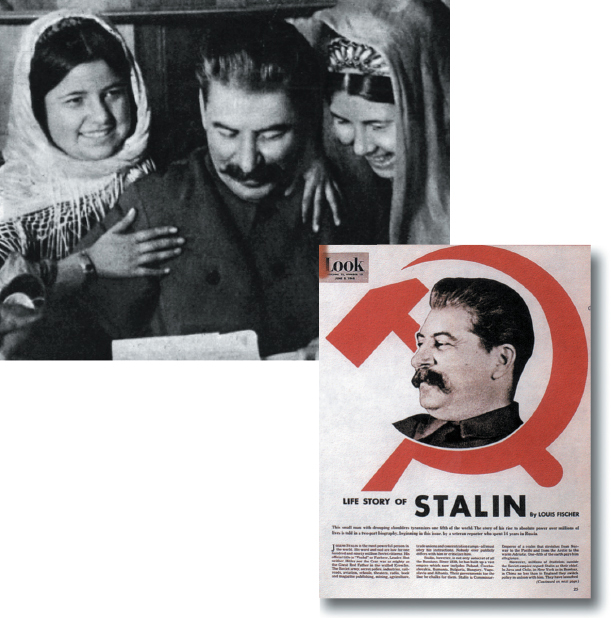What factors contributed to the Cold War?
Printed Page 780
WITH JAPAN’S SURRENDER in August 1945, Americans besieged the government for the return of their loved ones. Americans wanted to dismantle the large military establishment and expected the Allies to cooperate in the management of international peace. Postwar realities quickly dashed these hopes. The wartime alliance forged by the United States, Great Britain, and the Soviet Union crumbled, giving birth to a Cold War. The United States began to develop the means for containing the spread of Soviet power around the globe, including an enormous aid program for Europe, known as the Marshall Plan.

Figure false: Joseph Stalin: From Ally to Enemy
Figure false: These two portrayals indicate how quickly the World War II alliance disintegrated into the Cold War. The photograph on the left, from a 1944 issue of the popular magazine Look, shows Stalin with two adoring schoolchildren. Only four years later, in 1948, Look published Stalin’s life story, framing his photo with communism’s emblem, the hammer and sickle. The Michael Barson Collection/Past Perfect.
CHRONOLOGY
1945
- – Franklin Roosevelt dies; Vice President Harry Truman becomes president.
1946
- – George F. Kennan drafts containment policy.
- – United States grants independence to the Philippines.
1947
- – National Security Act.
- – Truman announces Truman Doctrine.
- – U.S. aid to Greece and Turkey.
1948
- – Marshall Plan is approved.
- – United States recognizes Israel.
1948–1949
- – Berlin crisis and airlift.
1949
- – Communists take over China.
- – North Atlantic Treaty Organization (NATO) is formed.
- – Soviet Union explodes atomic bomb.
- – Truman approves development of hydrogen bomb.
1951
- – U.S. occupation of Japan ends.